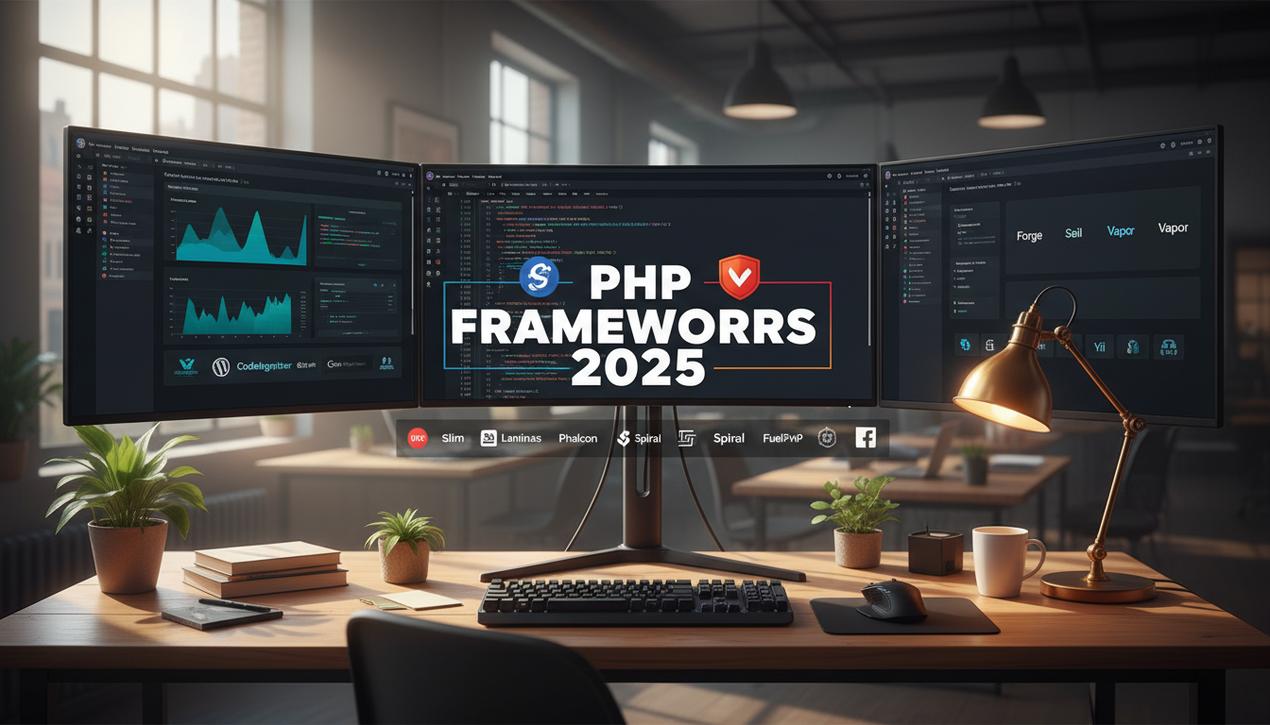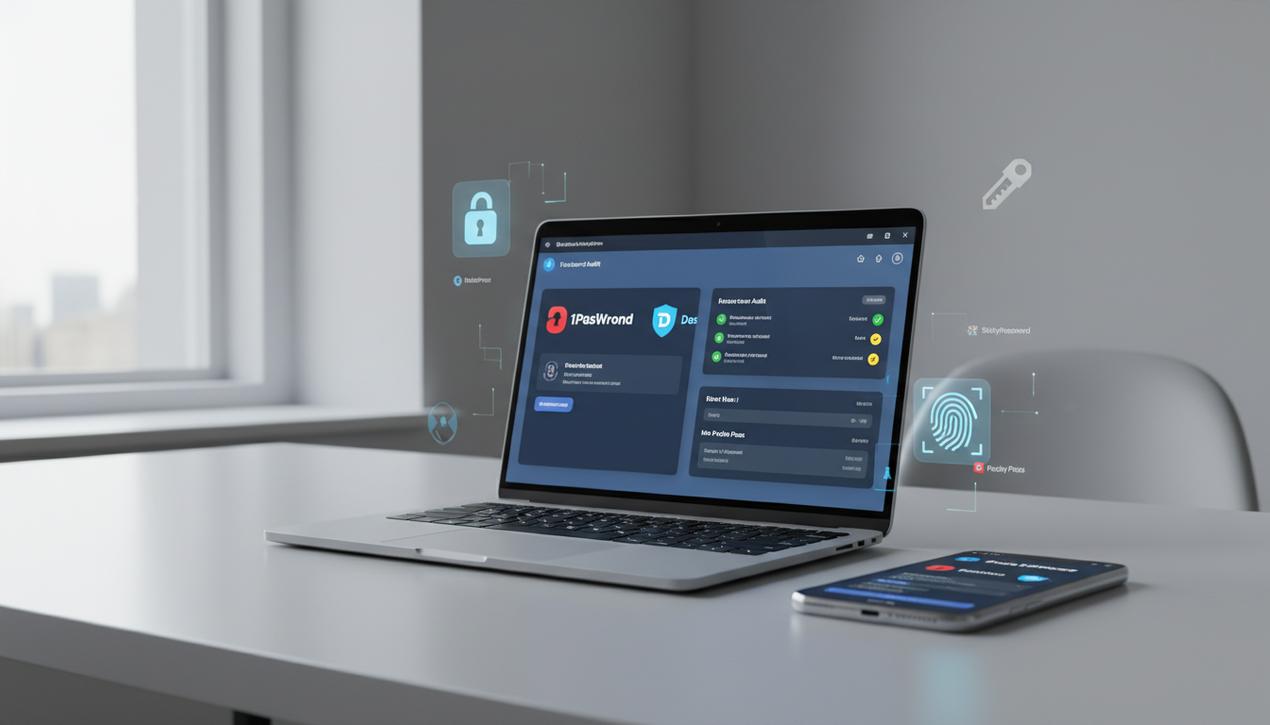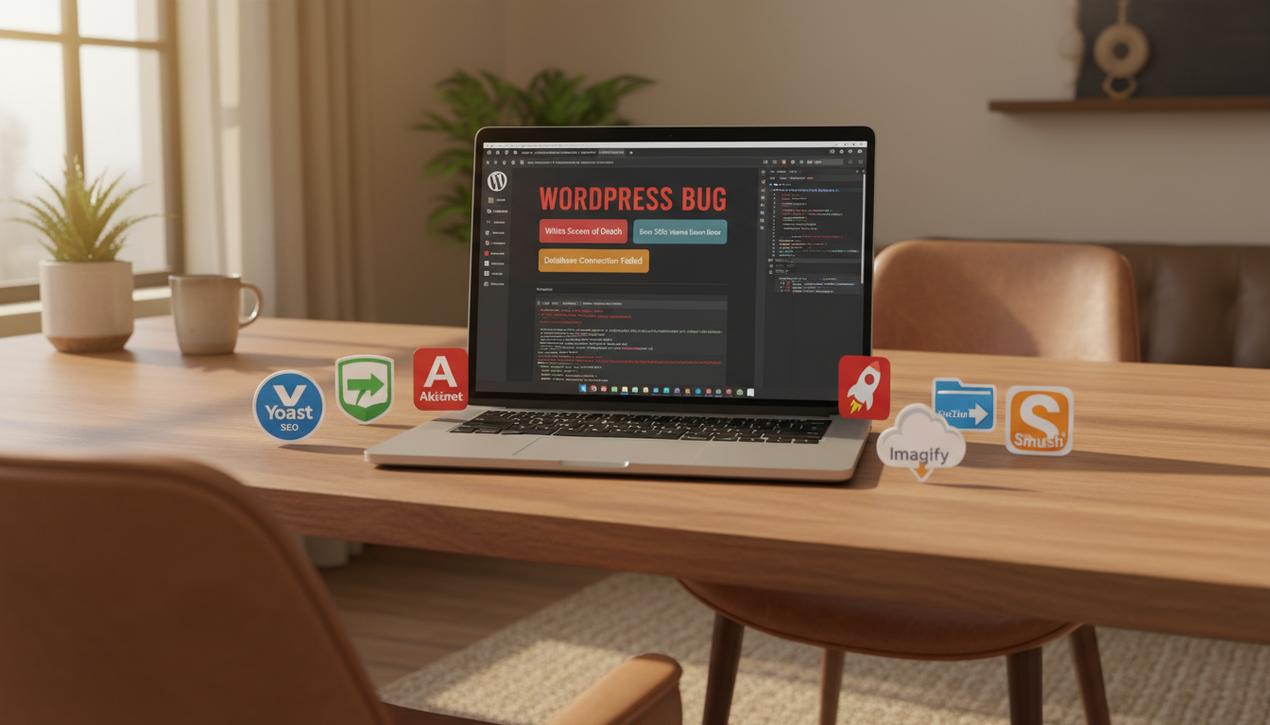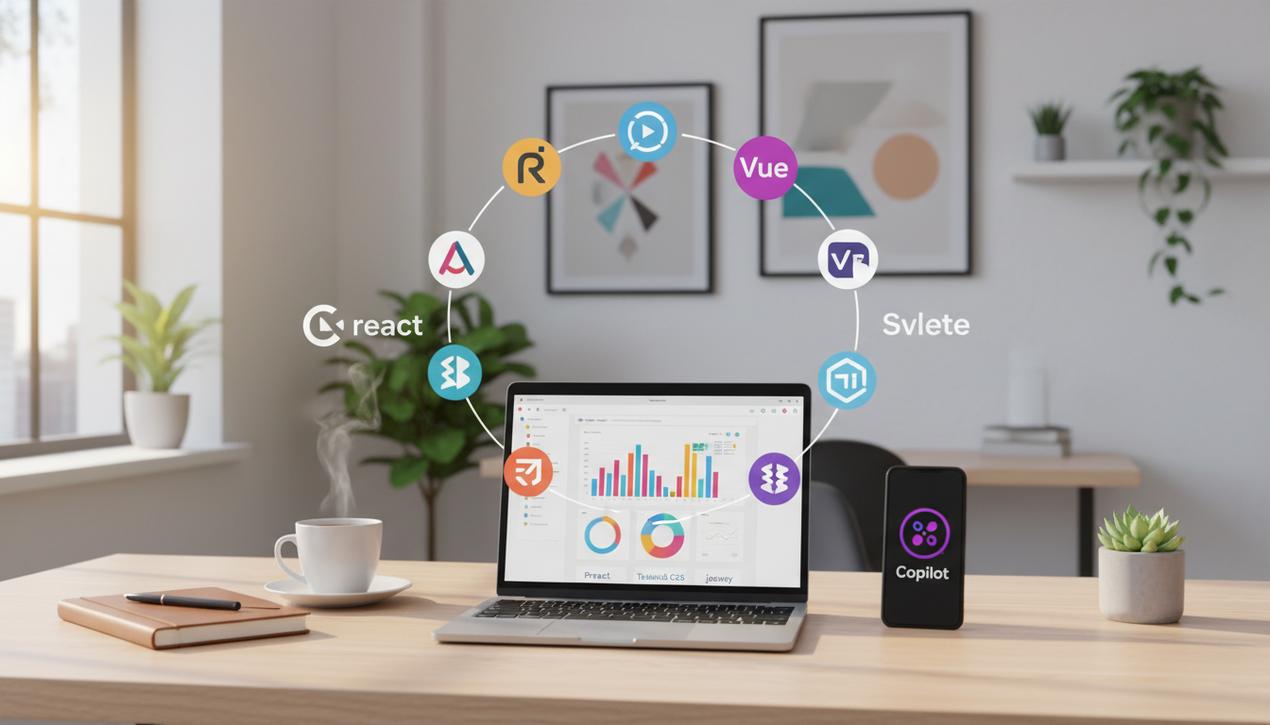Top 10 PHP Frameworks in 2025: A Developer’s Guide


Despite the rise of new languages, PHP continues to be a dominant force in web development, powering nearly 77% of all websites with a known server-side language. Giants like WordPress and Facebook rely on its robustness. In 2025, the PHP ecosystem is more mature and performant than ever, thanks to significant improvements from recent PHP 8.x versions. In this landscape, PHP frameworks have become indispensable tools. They provide a solid, secure, and optimized structure, enabling developers to build complex applications faster. By leveraging proven function libraries and adhering to established coding conventions, frameworks reduce complexity and accelerate time-to-market. This comprehensive guide explores the essential PHP frameworks, from market leaders to specialized challengers, to help you choose the most suitable tool for your projects.
The Market Heavyweights: Symfony and Laravel
Two frameworks command the vast majority of new PHP projects. Their popularity is built on different philosophies but shared power and maturity, making them top-tier choices for serious, scalable applications.
Symfony: Robustness for Enterprise Projects
Launched in 2005, Symfony is much more than just a framework; it’s a set of reusable PHP components that have become an industry standard. In fact, many other frameworks, including Laravel, use Symfony components under the hood. Maintained by the company SensioLabs, it is renowned for its stability, flexibility, and adherence to web standards. Ideal for complex, large-scale applications like e-commerce platforms or ERPs, Symfony imposes a clear structure that promotes long-term maintainability. Its learning curve may be more demanding, but the investment pays off for critical projects that require a solid architecture and high reliability.
Laravel: The Ecosystem for Productivity and Elegance
Since its launch in 2011, Laravel has experienced a meteoric rise to become the most popular PHP framework in terms of GitHub stars and developer satisfaction. Its philosophy is centered on “developer experience” (DX), offering an elegant and expressive syntax that makes coding enjoyable. Laravel simplifies complex tasks like authentication, queue management, and routing. Its ecosystem is its greatest asset: tools like Forge for deployment, Sail for local development, and Vapor for serverless architectures make it an incredibly complete and productive solution.
The Established and Reliable Challengers
Beyond the leading duo, several frameworks continue to offer proven solutions, each with its own strengths. They represent solid alternatives for specific needs or for teams already familiar with their architecture.
CodeIgniter: Rediscovered Lightness and Simplicity
CodeIgniter is one of the oldest frameworks, known for its small footprint, high performance, and clear documentation. After a period of slower development, the framework has seen a renaissance with version 4, which completely modernized it while retaining its core simplicity. It does not enforce strict rules and can be used as a simple toolkit, making it highly flexible. It’s an excellent choice for applications that require good performance on modest hosting environments.
Yii Framework: Performance and Security Built-In
Yii (an acronym for “Yes, It Is!”) is a high-performance, object-oriented framework designed to be fast and secure. It includes numerous out-of-the-box security features, such as prevention against XSS and CSRF attacks. One of its major strengths is Gii, a powerful code generator that allows you to quickly create skeletons for models, controllers, and views, thereby significantly speeding up prototyping and development.
CakePHP: The Pioneer of Convention Over Configuration
CakePHP was one of the first frameworks to popularize the “convention over configuration” principle in the PHP world. This means developers can focus on business logic rather than tedious setup, as long as they follow the framework’s naming and structural conventions. It remains a fast and effective solution for developing standardized web applications.
Micro-Frameworks and API Specialists
A major trend is the creation of decoupled architectures, where the backend exposes an API consumed by one of the top front-end frameworks or a mobile application. In this context, micro-frameworks excel with their minimalism and efficiency.
Slim: The King of Micro-Frameworks
Slim is a micro-framework designed for quickly and elegantly creating RESTful APIs and simple web applications. It provides only the bare essentials: a powerful router, request and response management, and a middleware system that allows for modularly adding features like authentication or logging. It is the perfect choice for microservices or API backends.
Laminas (Formerly Zend Framework): Modular Power
The Laminas Project is the open-source successor to the Zend Framework. It follows a “middleware-centric” approach, where each request is processed by a series of independent software layers. This architecture makes it extremely flexible and well-suited for creating complex, high-performance APIs. It is backed by the Linux Foundation, ensuring its longevity and stability.
Frameworks Focused on High Performance
For applications that need to handle a very large number of concurrent requests, some frameworks stand out due to their architecture designed for maximum speed, often by leveraging asynchronous technologies.
Phalcon: Speed Compiled in C
Phalcon takes a unique approach: it is delivered as a C extension for PHP. This means the framework’s core is pre-compiled and runs at near-native speed, making it extraordinarily fast. Developers write their code in PHP as usual but benefit from exceptional performance. It’s an ideal solution for very high-traffic applications where every millisecond counts.
Spiral: The Modern Framework for Long-Running Applications
Spiral is a modern PHP framework designed to work with application servers like RoadRunner. Unlike the traditional model where the application is reloaded on every request, Spiral remains in memory, eliminating much of the boot-up latency. It supports coroutines and fibers, enabling an asynchronous approach for exceptional performance and scalability.
FuelPHP: The Flexibility of HMVC
FuelPHP is a modular framework that extends the classic MVC concept with HMVC (Hierarchical Model-View-Controller). This architecture allows for better organization and reuse of entire application sections as independent widgets. It also places a strong emphasis on security and flexibility.
How to Choose the Right PHP Framework for Your Project
Choosing a framework should not be based solely on popularity. Several criteria must be evaluated to find the tool that best fits your constraints and goals.
- Project Nature: Is it a simple REST API? Slim or Laminas would be perfect. Is it a complex enterprise application? Symfony is a safe bet. A rapid project with a strong need for productivity? Laravel excels here.
- Performance Requirements: For a site with moderate traffic, most modern frameworks are sufficient. For high-performance needs, which you can track with tools to monitor website changes, Phalcon or Spiral could make a significant difference.
- Learning Curve: Frameworks like CodeIgniter or Slim are very easy to get started with. Laravel is known for its gentle learning curve, while Symfony requires a more significant initial investment.
- Ecosystem and Community: A framework with a large community like Laravel or Symfony ensures you can easily find help, tutorials, and third-party libraries (packages) to extend its functionality.
The PHP framework ecosystem in 2025 is rich, mature, and dynamic. Far from being an outdated language, PHP continues to innovate and offer world-class development tools. Whether you prioritize the productivity and ecosystem of Laravel, the robustness and structure of Symfony, or the speed of a micro-framework like Slim, there is a solution tailored to every need. The best choice will be the one that aligns the framework’s strengths with your project’s goals, your team’s skills, and your long-term performance requirements. Do not hesitate to experiment to find the tool that will make your development process not only effective but also enjoyable.




